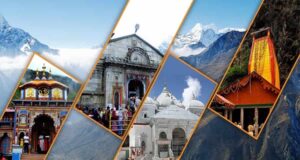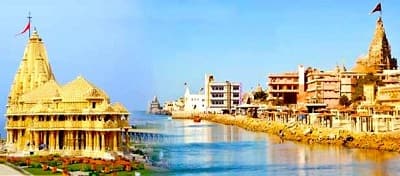Most Popular Hindu Festivals In Kerala
Kerala is the essence of India all festivals are celebrated with great joy, pomp, show, and cavort. The popular Hindu Festivals in Kerala are Onam, Vishu, Thiruvathira, Shivarathri, Deepavali, Navarathri, Pongal, Thrissur Pooram, and Temple Festivals.
Onam

Onam festival (Thiruvonam) is the most popular Hindu festival in Kerala. It is celebrated with Pomp and gaiety annually to commemorate the prosperous and peaceful life of the people under the rule of the legendary King Mahabali. It is believed that Mahabali visits his subjects every year during the plentiful month of chingam (August- September). The Onam festival in Kerala coincides with the harvest season. It is now considered the state festival of Kerala.
The Celebration commences from the lunar asterism them and continues for eleven days till avittam. The commencement is marked by the floral decoration of the central courtyard of every household. In central Kerala, Onam is associated with the worship of Thrikkakara Appan during the last three days before preceding Thiruvonam. Conical clay figures representing Thrikkakara Appan are prepared and worshipped. Thiruvonam day is the most important day. New clothes are worn on the day and there is grand feasting in every household. There are some traditional items of entertainment associated with Onam. Panthu Kali, vettukali, karekali, kayyamkali, villukottu, thumbi thullal, karadikali, thiruvathirakali and oonjalattam are some of them.
In former times, the tenants and agricultural laborers used to offer presents to their landlords on the eve of the Onam festival (Thiruvonam) and in return, receive new clothes, paddy and vegetables to celebrate Onam. Similarly, village artisans, washermen, and barbers also used to receive paddy, vegetables, and clothes from the landlords.
The celebration of Onam as a State festival of Kerala was encouraged by the Government in 1961 and now, the festival is celebrated throughout the state with great pageantry and gaiety irrespective of caste and creed.
Vishu

Vishu festival of Kerala falls on the first day of medam (April), which is the astronomical New Year’s Day. It is believed that the New Year’s dawn offers a glimpse of the prosperous year to follow. It is general practice to prepare for an auspicious Vishukani (the first sight in the morning on awakening) with articles that represent plenty and prosperity. Thus, gold ornaments, konna, flowers, fruits, vegetables, gold and silver coins, mirrors, statues and photographs of Laxmi, Vishnu, and other Gods and Gold dresses are arranged the previous night so that, on awakening, the person first sees the pleasant and divine sight of the Gods and the articles representing prosperity. If these are arranged in another room, the person goes with closed eyes only after sitting before the display is arranged. While coconuts, yellow cucumber, jackfruit, mangoes, etc. form part of the Vishukani, ash gourd is not used. Crackers are lit on the morning of the Vishu festival in Kerala
After the karikanal, the members of the family receive kaineettam (gift of coin) from the family elders. There is a grand feast in the afternoon. In certain parts of the Kerala tour, rice, Kanji, Puzhukku (a kind of curry made of different kinds of tubers), and papadams are served in the afternoon and the feast is in the evening.
Thiruvathira Festival

Tiruvathira falls on the day of tiruvathira asterism in the month of Dhanu (December-January) and commemorates the death of Kamadeva, the God of Love in Hindu mythology. It is observed as the birthday of Lord Siva. Women observe this festival to seek a long prosperous married life. They take a bath early in the morning and worship Lord Siva and Paravati. They eat only plantation fruits, tender coconuts, Kuva, pudding (a preparation of arrowroot powder mixed with jaggery and coconut), and Puzhukku. Women perform a folk dance namely Thiruvathirakali. In central Kerala, chozhi (masked men representing bhootaganas of Lord Siva) visit every household in the early morning to the accomplishment of drums (chenda). They bless the family members and the people in turn offer fruits and clothes.
In the past, Tiruvathira was observed elaborately. Early in the morning women used to go to a nearby pond or river for Thiruvathirakali (splashing water with their hands and singing). Ettangali nivedyam was customary on the day before Tiruvathira. This is an offering to Siva and Parvati of eight kinds of tubers cooked by direct roasting. The first Tiruvathira after marriage is called Puthan Tiruvathira or Pootiruvathira and used to be celebrated on a large scale.
Shivratri

Shivarathri is observed in Kerala more as a religious ritual than a festival. Sivaratri falls in the month of Kumbham (February- March). The festival commemorates the day on which Siva protected the world by drinking the Malayalam (deadly poison emitted by the serpent). Devotees fast on Shivarathri day and remain awake throughout the night; visit the Siva temples and offer worship to Lord Shiva. In the famous Siva temples of Aluva, Vaikom, Ettumanoor, and Thali, Sivaratri this Hindu festival of Kerala are celebrated in a grand manner.
Deepavali

The word ‘Deepavali’ means a cluster of lights. In Kerala, Deepavali is celebrated grandly by the Hindu population of Tamil origin. It falls on the preceding the new moon in the Malayalam month of Thulam (October-November). It is celebrated in commemoration of the happiness consequent to the destruction of the demon called Narakasura by Lord Krishna.
Navarathri

Navarathri is celebrated in the month of Kanni (September- October). This festival is observed for nine days. The last three days, namely Durgashtami, Mahanavami, and Vijayadasami, are more important for the Hindus in Kerala. On these days Saraswati puja is performed. On Durgashtami day, the Pooja Vaippu is performed either in temples or in households, with books, Grandhas, and implements used in earning a living being kept in front of the image of Goddess Saraswati and a special puja performed. All studies and work are kept in abeyance till after the Pujavaippu. On Vijayadashami day, after the books and the implements are removed a ceremony is called Pujaeduppu, Vijayadasami day is important for Vidhyarambham (initiation of children into the study of the alphabets). Work and study are resumed on Vijayadasami day.
The Tamil Brahman living in Kerala celebrates this festival on the nine days of Navaratri. Koluvenpu (a decorative arrangement of images of Gods and Goddesses, animals, and toys) is a feature of their celebration.
Pongal

Pongal is a harvest festival of Kerala, that is celebrated grandly for three days by the Hindus of Tamil and Telugu origin. Pongal falls in the month of Makaram (January).
Each temple in Kerala has its own utsavam (festival), celebrated in its own way. In some temples, this harvest festival of Kerala is celebrated for ten days and in some, it is one day’s celebration.
Thrissur Pooram Festival

Thrissur Pooram is the biggest festivals of Kerala and attracts the largest crowds. It is celebrated on the Pooram asterism in Medam (April-May). It is held in the vast Thekkinkadu maidan in the center of Thrissur. The festival originally introduced by Saktan Tampuran (1789-1805) is held with the wholehearted cooperation of the people of Thrissur, irrespective of caste or creed. Nine temples in and around Thrissur participate in the Thrissur Pooram, the concluding day of the Poorams of the nine temples. A huge procession sled by caparisoned elephants and accompanied by Panchavadyam and kudamattam (change of colorful umbrellas) is the highlight of the festival. There are also marvelous display of fireworks, a trade fair and an exhibition.
The Pooram festival is celebrated in North Kerala, particularly in the Kannur district. This festival falls in the month of Meenam (March-April). It begins on the Karthika asterism and ends on the Pooram asterism. These days, unmarried girls worship Kamadeva, the God of Love. This is known as Kamanombu and is a tradition from the days of the Sangam. The Pooram season is one of special rejoicing and merrymaking. Pooravilakku (illumination) and Poorakkali (a kind of folk play) are performed in temples.
Temple Festivals

Ekadasi in Guruvayur, Makaravilakku at Sabarimala, Bharani in Aluva, Bharani in Kodungallur, the Bhagavati temple festival, and Sivaratri festival in Alwaye are some of the famous temple festivals of Kerala. Pilgrims flock to temple festivals of Kerala from far and near. Two Ashtami festivals are held annually, one in Kumubham (February- March) and the other in Vrichikam (November- December) at the Siva temple in Vaikom.
Lord Ayyappa is the deity of the Sabarimala temple in the Idukki district. Two festivals are celebrated annually here at Sabarimala temple. They are the Mandala Pooja and the Makaravilakku. Makaravilakku is celebrated on the 1st of Makaram (January). During this period, pilgrims from different parts of Kerala and other states visit the temple and make offerings.
Kottiyur is in Kannur District and there are two examples here, Akkara Kottiyur and Ikkara Kottiyur, both in the deep forest. The annual festivals of the temple are celebrated in Edavam (May-June) and last for 28 days. It begins with the neyyattam on Swati Day in Edavam and ends with Thirukalasam after 28 days. Many pilgrims from all parts of North Kerala and nearby Coorg attend the festival and make offerings. Generally, the temple festivals of Kerala start with the kodiyettu (flag-hoisting) and end with arat (holy immersion) of the deity. The procession of caparisoned elephants is a feature of most temple festivals. Cultural programs like chenda melam, panchavadyam, thayambaka, kathakali, velakali, ottam, thullal, pavakoothu and theyyattam are held in temples during the festival.


